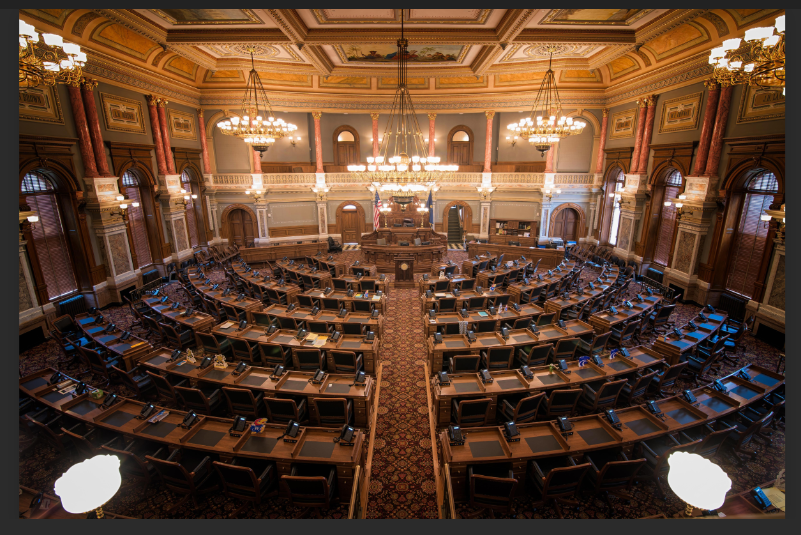Table of Contents

Assessing Vulnerability: A Deep Dive into the Eight Most Contested Senate Seats in the 2024 Election
Introduction:
As the political landscape gears up for the 2024 U.S. Senate election, attention is squarely on the most vulnerable seats, particularly those held by Democratic incumbents. According to The Hill Campaign, eight Democratic Senators face significant challenges in their bid for re-election. In this comprehensive analysis, we will delve into the factors that make these seats vulnerable, explore the unique dynamics of each state, and assess the potential implications for the balance of power in the Senate.
The Landscape of Vulnerability:
The concept of vulnerable Senate seats hinges on a combination of factors, including incumbents’ approval ratings, the political climate in their respective states, and evolving voter sentiments. For the 2024 election, the following eight Democratic Senators are deemed the most vulnerable, as identified by The Hill Campaign:
- Joe Manchin – West Virginia:
Joe Manchin’s Senate seat in West Virginia emerges as one of the most closely watched races in the nation. As a Democrat in a state that has increasingly leaned towards the Republican Party, Manchin faces the challenge of navigating a complex political terrain. His ability to connect with the diverse West Virginian electorate, particularly on issues such as energy and gun rights, will play a pivotal role in determining the outcome. - Kyrsten Sinema – Arizona:
Arizona’s Kyrsten Sinema, known for her bipartisan approach, finds herself in a competitive re-election bid. The state’s political landscape has seen shifts in recent years, and Sinema’s challenge lies in balancing the interests of a diverse electorate. Her ability to maintain a centrist appeal while addressing the evolving priorities of Arizonans will be key to securing another term. - Sherrod Brown – Ohio:
Ohio’s Sherrod Brown faces a re-election battle in a state that has increasingly trended Republican. Brown’s long-standing tenure in the Senate and his advocacy for workers’ rights make him a recognizable figure. However, navigating Ohio’s changing political currents will require a strategic and adaptive campaign to retain his seat. - Jon Tester – Montana:
Montana’s Jon Tester, a Democrat in a traditionally conservative state, faces the challenge of appealing to a diverse electorate. Tester’s rural roots and focus on agricultural issues have historically resonated with Montanans. However, the 2024 election poses questions about the alignment of his policies with the shifting political dynamics in the state. - Bob Casey – Pennsylvania:
In Pennsylvania, Bob Casey confronts the complexities of a swing state that often plays a pivotal role in national elections. As a Democratic incumbent, Casey’s challenge lies in striking a balance between progressive policies and the more conservative sentiments present in certain regions of the state. - Jacky Rosen – Nevada:
Nevada’s Jacky Rosen navigates a re-election bid in a state known for its political fluidity. The diverse demographic landscape, including urban and rural influences, requires candidates to address a wide range of issues. Rosen’s ability to resonate with Nevada’s multifaceted electorate will be instrumental in determining the outcome. - Tammy Baldwin – Wisconsin:
Wisconsin’s Tammy Baldwin faces re-election in a state that has witnessed closely contested races in recent years. As a progressive Democrat, Baldwin’s challenge lies in maintaining support across the ideological spectrum. Her ability to address the concerns of both urban and rural Wisconsin will be crucial in securing another term. - Debbie Stabenow – Michigan:
In Michigan, Debbie Stabenow faces the task of defending her seat in a state with a history of political variability. As a Democratic incumbent, Stabenow’s campaign will likely focus on issues such as manufacturing, agriculture, and healthcare, aligning with the diverse needs of Michigan’s electorate.
The Dynamic Nature of Vulnerability:
It’s crucial to note that the list of vulnerable Senate seats is subject to change as the election approaches. Factors such as emerging issues, candidate strategies, and the broader political climate can reshape the landscape of vulnerability. The Roll Call article, which identifies Manchin and Sinema as the two most vulnerable Senate incumbents, underscores the fluidity of political dynamics and the potential for shifts in perceived vulnerability.
Assessing Vulnerability Factors:
- State Political Ideology:
The political ideology of each state plays a significant role in determining vulnerability. Democrats in traditionally conservative states may face challenges in aligning with the preferences of their constituents. - Incumbent Approval Ratings:
Incumbent approval ratings are a critical metric in assessing vulnerability. Issues such as accessibility, responsiveness, and policy alignment can influence how voters perceive their representatives. - Adaptability to Shifting Demographics:
The ability of incumbents to adapt to shifting demographics within their states is crucial. Changing population dynamics can reshape the political landscape, requiring candidates to connect with an evolving electorate. - Campaign Strategies:
The strategies employed by candidates in addressing local issues, connecting with voters, and responding to opponents’ attacks can heavily influence the perception of vulnerability. A well-crafted and adaptable campaign strategy is essential.
Potential Implications for Senate Control:
The vulnerability of these Democratic Senate seats carries significant implications for the balance of power in the Senate. If Republicans successfully flip a significant number of these seats, it could tip the scales in their favor. The outcomes in West Virginia, Arizona, Ohio, Montana, Pennsylvania, Nevada, Wisconsin, and Michigan will be closely watched, as they could influence the broader composition of the Senate.
Joe Manchin – West Virginia:
West Virginia’s Senate race stands out as a microcosm of the broader struggle for Democrats in traditionally red states. Joe Manchin, a centrist Democrat, faces the daunting task of maintaining his connection with voters in a state that has increasingly leaned Republican. With West Virginia’s deep ties to the energy industry and a conservative electorate, Manchin’s campaign strategy must carefully navigate these issues to secure another term. His ability to balance his party affiliation with the unique demands of West Virginians will be pivotal in determining the outcome.
Kyrsten Sinema – Arizona:
In Arizona, Kyrsten Sinema’s re-election bid takes center stage as the state grapples with shifting political dynamics. Sinema, known for her bipartisan approach, must strike a delicate balance in a state that has witnessed a blurring of traditional political lines. Arizona’s diverse electorate, including a growing population of younger and more progressive voters, adds complexity to Sinema’s campaign. Her challenge lies in adapting her centrist appeal to align with the evolving priorities and demographics of the state.
Sherrod Brown – Ohio:
Ohio’s Sherrod Brown faces a unique challenge in a state that has seen a gradual shift toward Republican dominance. Brown’s advocacy for workers’ rights and his longstanding presence in Ohio politics have made him a recognizable figure. However, with the state’s political landscape trending away from Democrats, Brown’s campaign will need to strategically address the concerns of Ohioans, especially in regions where conservative sentiments hold sway.
Jon Tester – Montana:
Jon Tester’s Senate seat in Montana represents a Democratic stronghold in a predominantly conservative state. Tester, with his rural roots and focus on agricultural issues, has traditionally resonated with Montanans. However, the 2024 election poses questions about whether Tester’s policies align with the changing political dynamics in Montana. His campaign will likely hinge on effectively communicating his record and addressing the evolving concerns of his constituents.
Bob Casey – Pennsylvania:
Pennsylvania’s status as a swing state places Bob Casey in a delicate position. As a Democratic incumbent, Casey must navigate the diverse political landscape of Pennsylvania, which includes urban centers with progressive leanings and rural areas with more conservative sentiments. His challenge lies in appealing to a broad spectrum of voters while staying true to his party’s values.
Jacky Rosen – Nevada:
Nevada’s Senate race featuring Jacky Rosen unfolds against the backdrop of the state’s political fluidity. Rosen’s campaign must navigate the diverse demographic influences in Nevada, ranging from the urban areas of Las Vegas to the more rural regions. Her ability to connect with voters on issues such as healthcare, immigration, and economic development will play a pivotal role in determining the outcome of this closely contested race.
Tammy Baldwin – Wisconsin:
In Wisconsin, Tammy Baldwin faces the challenge of retaining her Senate seat in a state that has become a battleground in recent elections. As a progressive Democrat, Baldwin must carefully balance her party’s priorities with the more conservative sentiments prevalent in certain areas of Wisconsin. Her campaign’s success will depend on effectively communicating her stance on key issues and appealing to the diverse electorate.
Debbie Stabenow – Michigan:
Michigan’s Senate race featuring Debbie Stabenow highlights the intricacies of a state with a history of political variability. Stabenow’s campaign will likely center on issues such as manufacturing, agriculture, and healthcare, addressing the diverse needs of Michigan’s electorate. As a Democratic incumbent, Stabenow’s challenge lies in navigating a state that played a pivotal role in the 2016 presidential election and has witnessed political shifts since then.
Roll Call’s Assessment:
The assessment by Roll Call, identifying Joe Manchin and Kyrsten Sinema as the two most vulnerable Senate incumbents, emphasizes the fluid nature of political landscapes. Factors such as approval ratings, adaptability to shifting demographics, and effective campaign strategies are crucial elements that will shape the vulnerability of these seats in the coming months. As the election approaches, the landscape may evolve, and these senators will face the formidable task of proving their resilience in the face of electoral challenges.
National Implications:
The vulnerability of these Democratic Senate seats extends beyond individual races, holding broader implications for the balance of power in the Senate. If Republicans successfully flip a significant number of these seats, it could alter the dynamics of legislative decision-making, impacting everything from policy priorities to judicial appointments. The outcomes in West Virginia, Arizona, Ohio, Montana, Pennsylvania, Nevada, Wisconsin, and Michigan will be closely watched, as they could influence the broader composition of the Senate and, subsequently, the nation’s governance.
Conclusion:
As the nation hurtles toward the 2024 U.S. Senate election, the spotlight on vulnerable Democratic seats adds a layer of complexity to an already intricate political landscape. The fate of incumbents in West Virginia, Arizona, Ohio, Montana, Pennsylvania, Nevada, Wisconsin, and Michigan will not only shape the Senate’s partisan composition but also provide insights into the evolving dynamics of American politics. As campaigns unfold, candidates navigate local nuances, and voters weigh their options, the journey towards November 2024 promises to be a captivating narrative, highlighting the delicate dance between incumbency and vulnerability in the democratic process.
